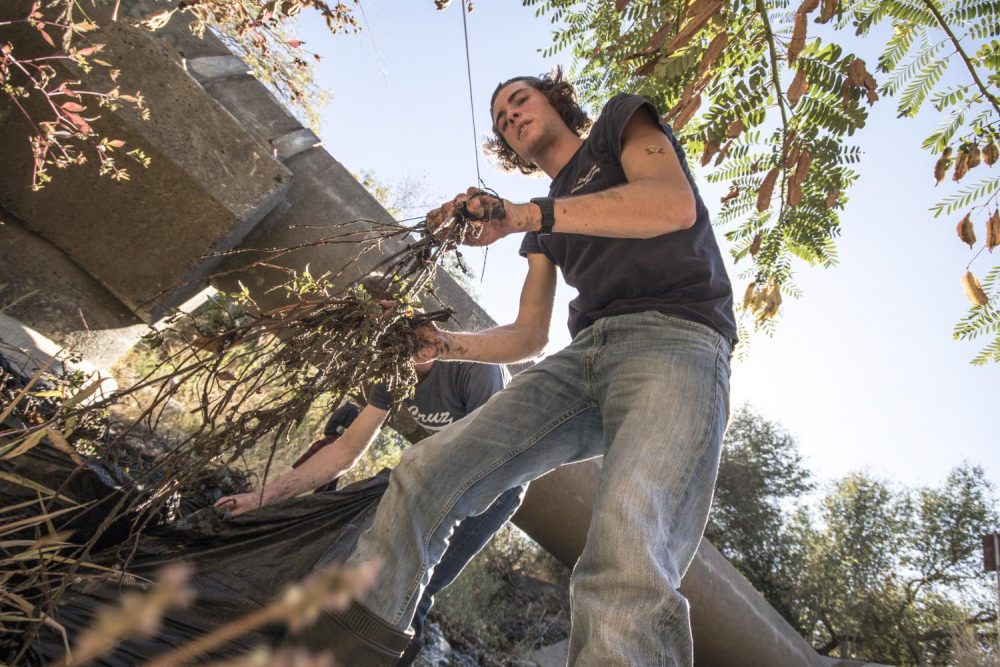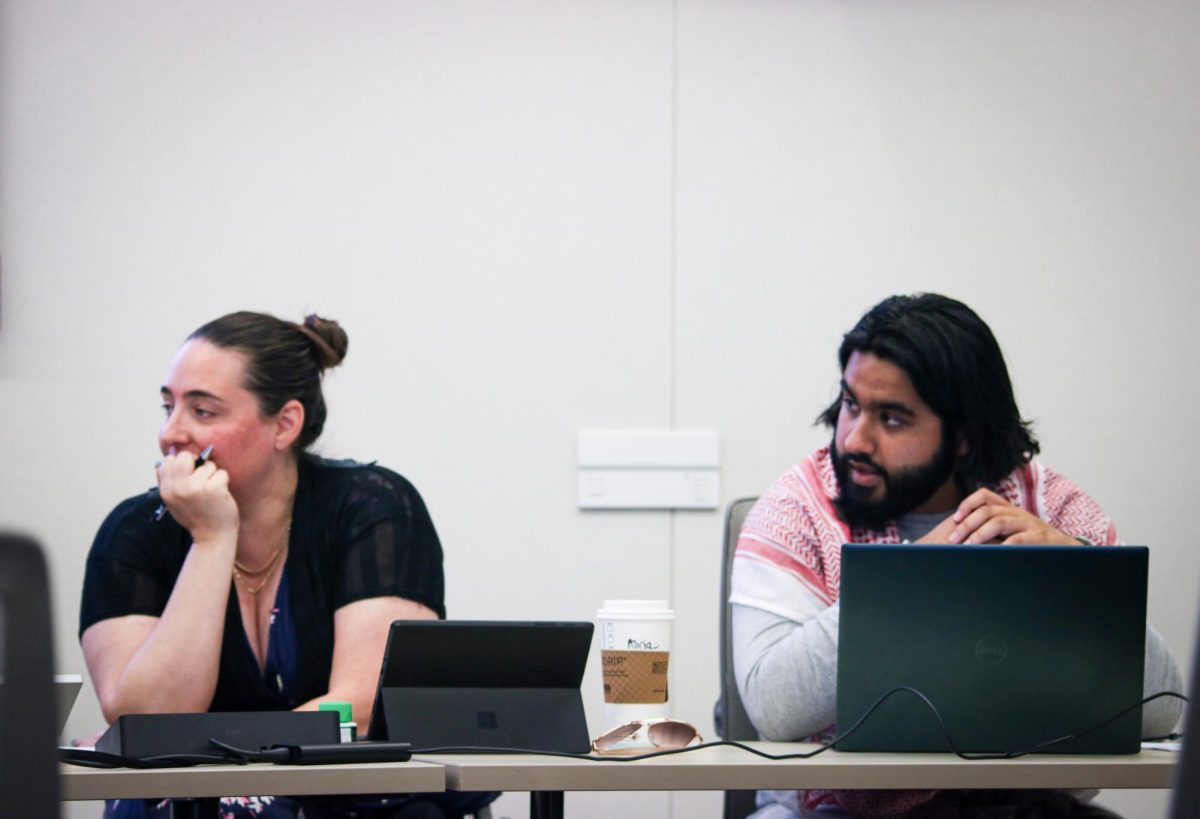The Arcade Creek is a brook hidden by overgrown bushes and shrubbery that winds around the perimeter of American River College’s campus. Tall grass lines its banks and the occasional rock obscures its pristine surface.
Students often use the gravel trail that runs along the banks of the creek as a walking path in between classes. They stroll the curvy nature trail unaware that a quiet threat lurks within the depths of the water just a few feet from the trail.
Just underneath the surface of the water, tentacle-like-vines twist themselves into tight knots and spread along the bed of the creek in a contorted mess of creeping plants slowly conquering the water.
This aquatic terror has a name: water primrose. An invasive plant species that, if left to its own devices, will eventually end up spreading along the entirety of the creek and destroying the ecosystem that thrives around it.
Now, American River college’s Natural Resources department, with the help of student volunteers, is removing the invasive plant material before it can grow any further.
According to Christy Bowles, a natural resources professor at ARC, the water primrose plants are alien to not only the creek but to the state as well.
“Water primroses are invasive plants, so it is not native to California and it does not have natural enemies so it can out-compete native plants and change the creek environment,” Bowles said.
As for how the primrose first arrived in Arcade Creek, Bowles has a theory.
“You can get invasive species by accidental aquarium release or someone who dumps their aquarium plants and animals in the creek, but we do not know for sure how this plant got here,” Bowles said.
The department has to act quickly because it has a limited window before the rain comes and fills up the creek, according to Bowles.
“The primrose are still small so I am trying to remove as much as I can,” Bowles said.
The Natural Resources Department has been cleaning up the creek for about 11 years, according to its department chair, Jennifer Neale.
Neale added that the department started restoration work in the creek in 2013, with the goal of improving the environmental health of the creek.
Arcade Creek is considered to be an urban creek which means that it is heavily impacted by humans.
“We remove trash and restore the habitat by planting plants in the creek bed to keep erosion down,” Bowles said.
The creek is also used as an learning environment for students within the department, according to Bowles.
“This is our classroom. This is where we take our students to learn how to appreciate the natural habitat,” Bowles said. “We are not only doing science in the classroom, we are out here doing hands-on science and teaching the students at the same time.”
Joe Shanahan is a student volunteer and a natural resources major who is currently taking classes in the Natural Resources department.
“I have a chance to make a difference by cleaning the creek. It is good to learn about [the plants] and what they do for the ecosystem,” Shanahan said.
On top of the wide variety of plant life surrounding the creek, Arcade Creek is also home to a much furrier variety of life.
“We will see beavers, deer, turkeys, birds and skunks,” Bowles said.
People who are interested in volunteering to help clean up the creek are welcome to contact Neale through her email at [email protected].
“There is always more work to do out there and the more people that help the better the condition the creek will be in,” Bowles said.














